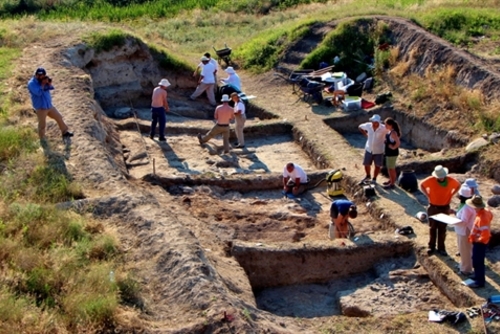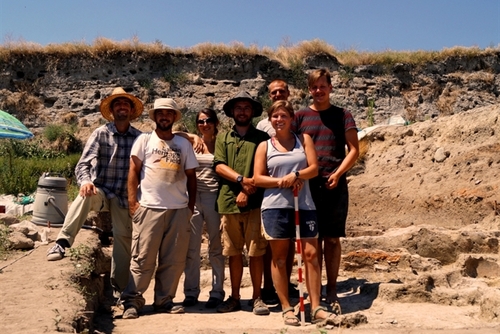In 2006 archaeologists discovered by excavating test pits and trenches a Copper Age settlement which was far larger (having a diameter of 400 m or surface of app. 100 000 sq.m) than the Tell Yunasite ruins and and was composed of two areas separated (around 4750 cal. BC) by a five meter wide cob wall and ditch (2 meter deep and 6 meter wide): the larger downtown and the uptown (acropolis) at the tell.
The earliest artifacts from these pits and trenches date 4900 cal. BC and mark either the establishment or extension of the prehistoric settlement. Inside the fortified uptown the buildings were placed close to each other because of the limited area.
More Information
- Period: Chalcolithic (4900-4100 BC)
- Project Type: Field school & archaeological excavation.The variety of activities and team flexibility make this project suitable for both Beginners and Advanced in either Field or Prehistoric Archaeology. Individual program and task assignment are available to advanced students.
- Location: Prehistoric tell next to the village of Yunatsite, Southern Bulgaria.
- Project Venue: In a comfortable downtown hotel in the district town of Pazardzhik, Bulgaria. The site is 8 km away (15 min ride) from Pazardzhik and the hotel. Transport on work days will be arranged and covered by the Balkan Heritage Field School (BHFS).
FAQ
- Application Deadline: until the places are filled, or latest 10 June
- Minimum length of stay: 1 session (two weeks)
- Minimum age: 18 (16, if the participant is accompanied by an adult family member)
- Number of field school places available: Maximum 20
- Language: English
- Experience required: No
- Accommodation: Included in the program fee
Program Dates & Tuition
- Field school session 1: 12 - 26 July - $2,250
- Field school session 2: 26 July - 9 August - $2,250



